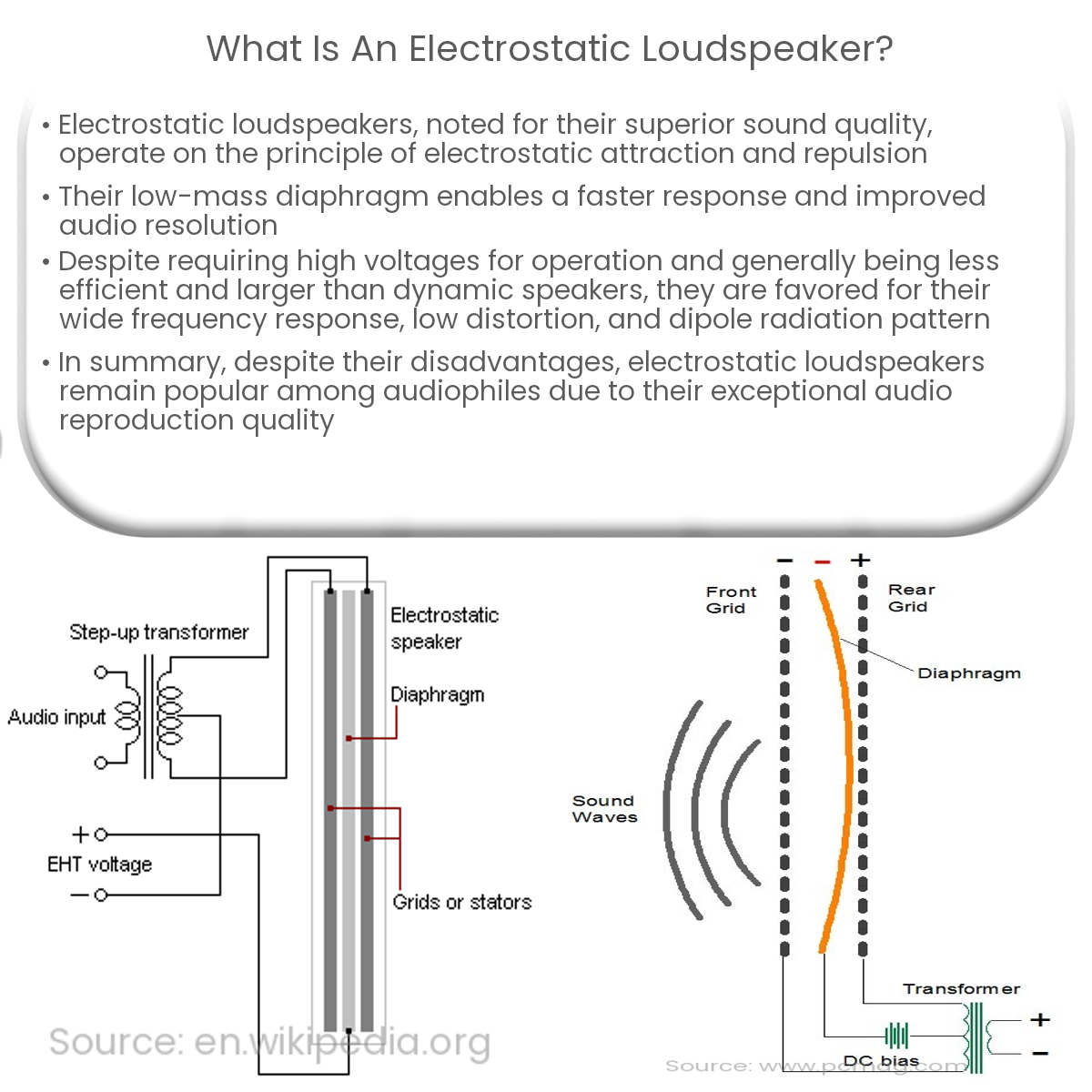Electrostatic loudspeakers operate on the principle of electrostatic attraction and repulsion. They consist of a thin, electrically conductive diaphragm, typically made of a plastic film, placed between two perforated stators.
Introduction to Electrostatic Loudspeakers
Electrostatic loudspeakers are a unique type of audio transducer known for their exceptional sound quality and distinct design. This article will discuss the principles behind electrostatic loudspeakers, their advantages and disadvantages, and how they differ from conventional dynamic loudspeakers.
Principles of Electrostatic Loudspeakers
Electrostatic loudspeakers operate on the principle of electrostatic attraction and repulsion. They consist of a thin, electrically conductive diaphragm, typically made of a plastic film, placed between two perforated stators. The diaphragm is uniformly charged with a high voltage, while an audio signal is applied to the stators. The resulting electrostatic forces cause the diaphragm to move, creating sound waves.
Advantages of Electrostatic Loudspeakers
Electrostatic loudspeakers offer several advantages over traditional dynamic loudspeakers:
- Low Mass: The diaphragm of an electrostatic loudspeaker is extremely lightweight, allowing for faster transient response and improved resolution of fine details in the audio signal.
- Wide Frequency Response: Due to their low mass and minimal moving parts, electrostatic loudspeakers can reproduce a wider frequency range, often extending well beyond human hearing.
- Low Distortion: Electrostatic loudspeakers have low harmonic and intermodulation distortion, resulting in a more accurate and natural sound reproduction.
- Dipole Radiation: Electrostatic loudspeakers radiate sound from both the front and rear of the diaphragm, producing a spacious and open soundstage.
Disadvantages of Electrostatic Loudspeakers
Despite their advantages, electrostatic loudspeakers also have some drawbacks:
- High Voltage Requirements: Electrostatic loudspeakers require high voltages for operation, which can increase the complexity and cost of the associated electronics.
- Low Efficiency: Electrostatic loudspeakers are generally less efficient than dynamic loudspeakers, often requiring more powerful amplification to achieve the same output levels.
- Size: Due to their dipole radiation pattern, electrostatic loudspeakers typically have larger panels than conventional dynamic loudspeakers, making them more challenging to integrate into certain room layouts.
Comparison to Dynamic Loudspeakers
Dynamic loudspeakers are the most common type of loudspeaker, utilizing a voice coil and permanent magnet to produce sound. While dynamic loudspeakers generally have higher efficiency and can handle more power, electrostatic loudspeakers are often favored for their superior sound quality, transient response, and low distortion.
Conclusion
Electrostatic loudspeakers offer unique advantages in sound quality and performance compared to conventional dynamic loudspeakers. Despite their drawbacks, they remain a popular choice among audiophiles and enthusiasts seeking the highest fidelity audio reproduction.


